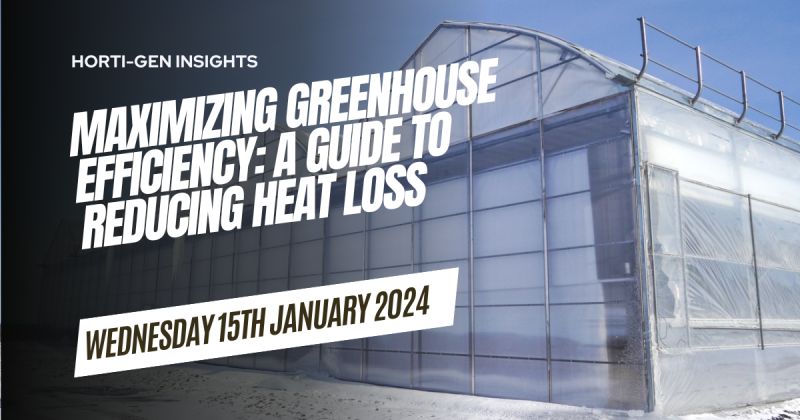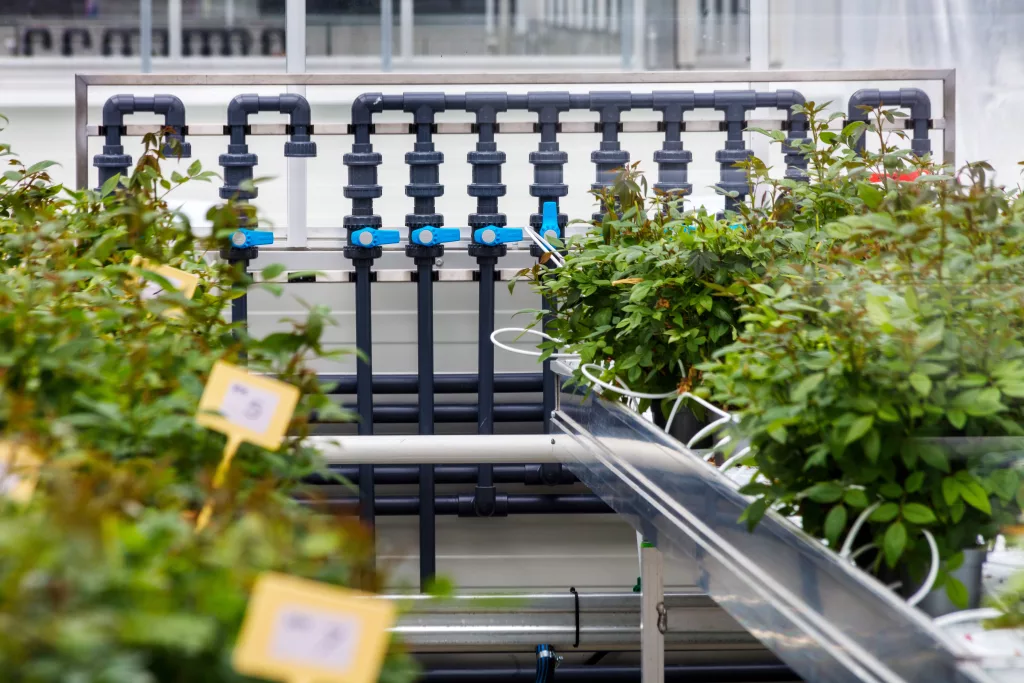- Horti-Gen Insights
- Posts
- Smarter Heat for Greener Growth: How Heat Pumps Are Redefining Greenhouse Energy in Québec
Smarter Heat for Greener Growth: How Heat Pumps Are Redefining Greenhouse Energy in Québec
Innovative Heating Solutions and Energy Strategies for Greener Greenhouses

Heating isn’t just about maintaining temperature inside a greenhouse; it’s at the center of production costs, energy management, and environmental responsibility. With rising fuel prices and growing pressure to reduce carbon emissions, Québec growers are turning toward cleaner, more efficient heating systems to protect their crops and strengthen their operations year‑round.
Éric Langlois began his career as a refrigeration technician, spending more than 15 years installing and servicing mechanical systems. His later positions as a sales representative and business development manager awakened a dual passion: decarbonization and agri‑food innovation. Since 2017, he has been part of Master Group’s external sales team, focusing on helping clients transition to cleaner, more efficient heating and climate control solutions.

In this interview, Eric Langlois shares valuable insights into the energy transition underway in Québec’s greenhouse sector, a movement driven by efficiency, electrification, and intelligent climate integration.
Heat Pumps: Rethinking Efficiency in Greenhouse Heating
Compared to conventional fossil-fuel systems, such as propane, natural gas, or oil furnaces, heat pumps offer a significantly higher level of efficiency. Traditional combustion systems typically operate with efficiencies ranging from 84% to 97%, depending on the design and operating conditions. Heat pumps, by contrast, deliver up to three times more heating output than the electrical power they consume.
“Using one kilowatt of electricity, we can generate about three kilowatts of heating power,”
Eric Langlois explains. “We capture heat from the outside air, combine it with the energy produced by the compressor motor, and recover the additional heat created during refrigerant compression.”
This energy amplification translates into substantial savings for growers, since heating is often one of their most significant operating costs. Beyond lower bills, heat pumps offer versatility — they can heat, cool, and help regulate humidity, all within one integrated system.
“The real benefit,” he says, “is that you reduce your energy footprint while gaining tighter control of the growing environment. It’s both a financial and agronomic advantage.”

Thermo-pump installation integrated in the greenhouse heating system
Incentive Programs and the Drive Toward Electrification in Québec, Canada
The move to heat pump technology is strongly supported by public incentive programs designed to accelerate Québec’s energy transition. Hydro‑Québec’s OSE program remains the best‑known example, offering significant funding for energy studies and installations in controlled environment agriculture.
“Hydro‑Québec is a true partner from the very first stages of a project,” says Eric. “They provide expert guidance and generous financial support for growers adopting efficient technologies.” He notes that a 100‑kW heat pump installation, for instance, can currently qualify for as much as $66,750 in assistance.
Other provincial initiatives also play key roles. The Écoperformance program and Transition énergétique Québec encourage major energy‑saving projects, while the MAPAQ (Ministry of Agriculture, Fisheries and Food) supports agricultural sustainability investments. Some federal programs may also contribute depending on the project profile.
Eric stresses the importance of involving partners early. “Every greenhouse has specific requirements,” he says. “To maximize grants and avoid missing opportunities, consult an energy management firm and contact Hydro‑Québec as soon as you start considering upgrades.”
Real Results: Up to 40% Energy Savings
What can growers realistically expect once a heat pump system is operating?
Eric points out that results depend on site conditions, especially humidity and outdoor temperature ranges. Between 0°C and –12°C, for instance, units may need to run periodic defrost cycles, which can temporarily reduce performance and sometimes require a fossil fuel backup.
“Nonetheless, in most cases we’re seeing around 40 percent lower energy costs compared with propane systems”
Eric notes that product advancements are making these benefits more accessible than ever. “Over the past two years, the introduction of new air-to-water heat pump solutions has given Master Group added flexibility,” he says. “This technology lets us adapt to a broader range of greenhouse heating needs, whether we’re upgrading existing systems or designing new installations.”
These savings go beyond cost reduction. Heat pumps help maintain more consistent climate parameters, limiting crop stress and improving plant quality, particularly for crops sensitive to temperature fluctuations, such as tomatoes, cucumbers, and strawberries.
They also advance growers’ sustainability goals by cutting greenhouse gas emissions. The newest models, specifically designed for cold climates, maintain stable efficiency even at –25°C, making nearly full electrification a viable option for many commercial greenhouse operations.
Connected Climate Systems: The Future of Greenhouse HVAC
The next wave of greenhouse heating lies in connectivity and intelligent control. Communication platforms like Bacnet and Modbus now enable seamless integration between heat pumps and other environmental systems, including energy curtains, dehumidifiers, CO₂ controls, and airflow controls.
“By integrating everything into a single platform, we can manage the greenhouse more intelligently,” Eric explains. “It’s not just about equipment, it’s about optimizing how the systems talk to each other.”
This digital layer is redefining how growers approach energy management. With precise automation, predictive adjustments, and data‑driven analytics, energy use becomes adaptive rather than static.
“Every kilowatt can now be optimized instead of wasted.”
New low‑temperature heat pumps designed for northern climates expand this potential thanks to higher performance at extreme conditions, helping producers build climate resilience and maintain crop uniformity even during cold snaps.
Practical Guidance for a Successful Project
Éric Langlois’s hands‑on experience has taught him that planning is everything. He recommends several key steps for producers considering a heat pump transition:
Involve Hydro‑Québec early. Confirm your electrical capacity and discuss available incentives before design begins.
Choose proven brands and technologies. Reliability and service support are essential for smooth operation.
Plan your schedule carefully. Manufacturing and delivery can take several weeks; starting in the fall allows for commissioning before the next growing cycle.
Partner with experienced installers. Collaborate with experienced professionals who specialize in integrating greenhouse HVAC systems.
Think ahead. Factor future expansions into your design to maximize investment value.
“It’s about preparing intelligently,” Eric Langlois says. “Every good project is built with the next phase in mind; that’s what makes investments sustainable.”
How Did You Like Today's Newsletter? |
Conclusion
A Smarter, More Resilient Greenhouse Future
Québec’s greenhouse industry is entering a decisive era of energy transformation. With rising interest in electrification and digital climate technologies, heat pumps are no longer an alternative; they’re a core solution for reducing costs and emissions.
As Eric puts it, energy‑efficient heating isn’t just a technical upgrade; it’s a strategic investment in long‑term performance. Supported by public programs, improved products, and more intelligent integration, today’s heat pump systems enable growers to produce more sustainably — and with greater control over their environment.
For operations across North America, watching Québec’s progress, this shift offers a clear message: the pathway to resilience begins with efficient energy design, thoughtful planning, and a vision of sustainable growth.





